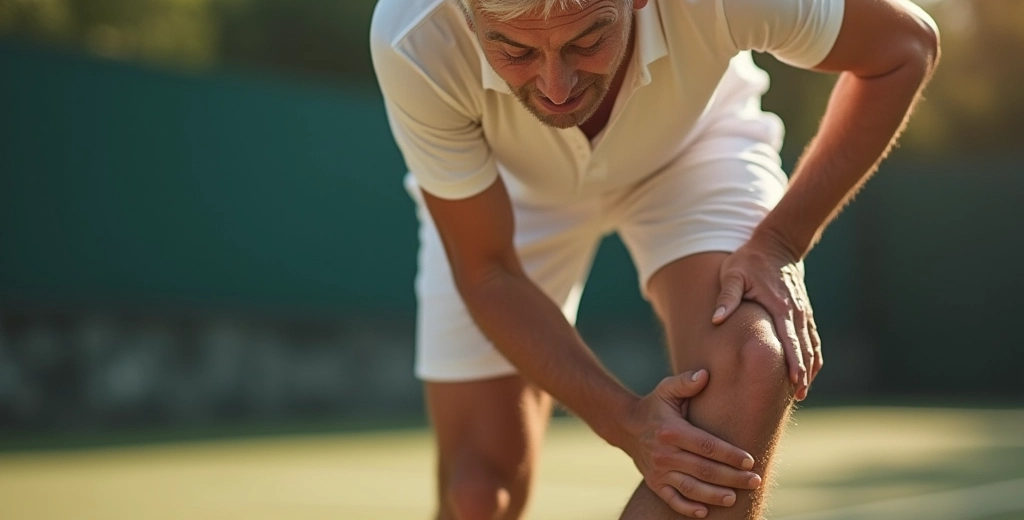Unsurprisingly, sports injuries are fairly common – even among active, healthy individuals. Injuries like strains, sprains and bone fractures affect both professional and amateur athletes every day. When you consider the thousands of hours dedicated to sports each year, some number of injuries is probably inevitable, and this holds true for athletes young and old, regardless of their fitness levels. Fortunately, we know how to prepare our bodies for sports and reduce our susceptibility to many of these injuries. The key is flexibility, and improving your flexibility can help reduce your risk of injury while also improving your overall performance.
What Is Flexibility, Really?
When most people think of flexibility, they think of stretching before a workout or doing yoga poses, but it goes deeper than that. Flexibility refers to the ability of your muscles and joints to move comfortably through their full range of motion. It’s what allows you to twist, bend, reach, and move freely without strain or stiffness.
Unlike strength or endurance, flexibility isn’t about how hard you push – it’s about how easily your body can move. And while it may not get as much attention as lifting heavier or running faster, it’s a crucial part of physical health – especially for athletes. Whether you’re a weekend warrior or training hard every day, good flexibility helps your body move efficiently and safely, setting a solid foundation for both performance and injury prevention.
Poor Flexibility Can Lead to Injury
Tight muscles and stiff joints force your body to work harder to move – and that’s where injuries often begin. Limited flexibility restricts your range of motion, which can throw off your movement patterns and put extra stress on muscles, tendons, and joints.
Stiffness and tightness in one body part can also cause us to unwittingly put extra stress on other parts. For example, if your hamstrings are too tight, your lower back might overcompensate when you run or bend, increasing your risk of strains or pulls. A stiff shoulder can mess with your throwing mechanics or swimming stroke, leading to inflammation or rotator cuff issues. And when your hips or ankles aren’t moving the way they should, your knees might take the hit.
These kinds of imbalances are common, especially in athletes who repeat the same motions over and over. Without proper flexibility, even simple movements can turn into injury risks. That’s why improving flexibility and mobility isn’t just for recovery – it’s a key part of keeping your body in the game.
The Benefits of Improving Flexibility
As stated above, improving your flexibility isn’t just about preventing injuries – it also helps your body perform at its best. When your muscles and joints move freely, you can run, jump, twist, and lift with more efficiency and less strain. That means better coordination, smoother movement, and improved control – whether on the field, in the gym, or just going about your day.
One of the biggest benefits is less wear and tear on your body. Flexible muscles absorb impact more effectively and help distribute force evenly, which protects your joints and soft tissue. You’re also less likely to suffer from muscle imbalances or compensations that can lead to nagging pain or chronic injuries.
Flexibility training also supports quicker recovery, reduces post-workout soreness, and can even improve posture and balance. It’s a simple investment that pays off in both performance and longevity.
Start Improving Your Flexibility Today
Improving flexibility doesn’t mean spending an hour doing static stretches on the floor. In fact, the smartest approach is to incorporate flexibility work into your regular routine in practical, targeted, and sustainable ways. Start with dynamic stretching before workouts. Controlled, active movements like leg swings, arm circles, or lunges help warm up your muscles and prepare your joints for activity. After you’ve finished exercising, static stretching (the kind where you hold a stretch for 20–30 seconds) can help improve long-term flexibility and ease post-workout tension. And remember – consistency is key. A few minutes of focused stretching each day can make a big difference over time.
As you work to improve your flexibility, don’t overlook the value of mobility and strength training as well. Your body parts are intended to move and work together. Keeping your whole body strong and flexible can improve your athletic performance, reduce your risk of injury, and speed up recovery times.
Flexibility might not be the flashiest part of fitness, but it plays a major role in keeping your body healthy, balanced, and injury-free. Whether you’re sprinting down a field, lifting weights, or just chasing after your kids, improving your flexibility can help you move better and avoid the kinds of strains and setbacks that slow you down.
When to Seek Professional Help
While general stretching and mobility routines can do wonders, sometimes your body needs a little more support, and that’s where professional help comes in. If you’re dealing with chronic tightness, recurring muscle strains, or limited range of motion that just won’t improve, it may be time to get assessed by a licensed therapist.
At Strive! Physical Therapy, we don’t just look at the symptoms – we take a whole-body approach to your condition and your needs. Our therapists can help pinpoint the root cause of your symptoms, and develop a personalized program designed around your body, your sport, and your goals. And you don’t need to wait for an injury to take action. In fact, the best time to work with a physical or occupational therapist is before you get hurt. Whether you’re a competitive athlete or just trying to stay active, we can help you move more freely, improve your flexibility, and keep pain from holding you back—all without relying on unnecessary medication or surgery.
We believe that staying active shouldn’t come at the cost of pain or injury. That’s why we focus on helping you build a strong, mobile foundation. If you’re looking to prevent injuries, boost performance, and feel better doing the things you love, our team is here to help you move forward with confidence.




